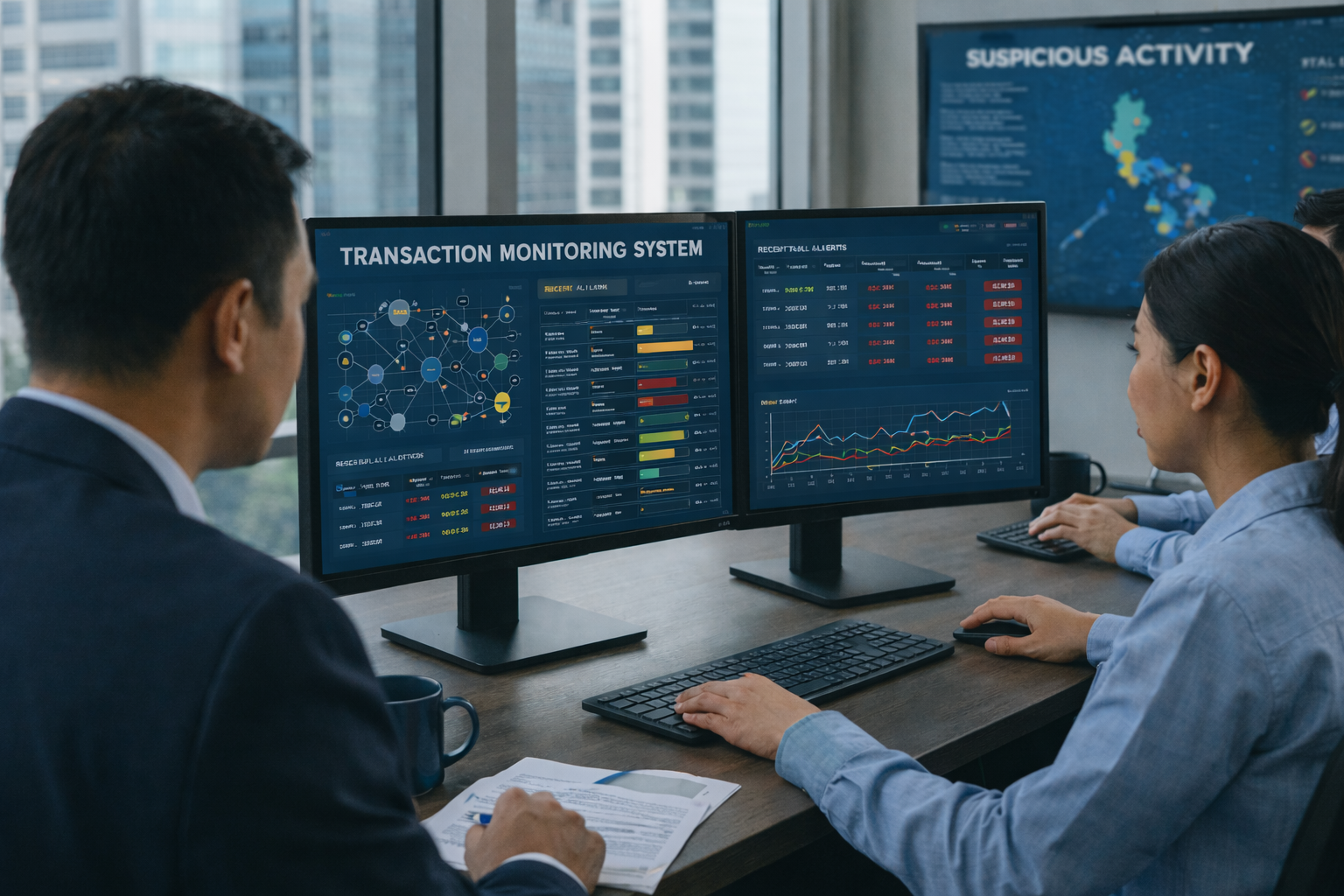Mastering Bank Fraud Prevention Strategies Today
.svg)
In the dynamic world of banking, fraud prevention and detection are paramount. The industry faces an ongoing battle against financial crime, with fraudsters constantly evolving their tactics.
This article aims to provide a comprehensive overview of bank fraud prevention and detection. It will delve into the types of fraud prevalent in the banking industry and the impact of technological advancements on fraud detection.
We will explore various strategies for fraud detection and prevention, including real-time transaction monitoring and the role of artificial intelligence. We will also discuss the importance of a multi-layered security approach that combines technology and human oversight.
The challenges in fraud detection and prevention will be examined, with a focus on balancing fraud risk and customer experience. We will also look at the difficulties in keeping up with evolving fraud tactics.
Finally, we will gaze into the future of bank fraud prevention, discussing innovations on the horizon and the importance of global cooperation and information sharing.
Whether you're a financial crime investigator, a compliance officer, or a bank executive, this article will equip you with the knowledge to stay one step ahead in bank fraud prevention and detection.

The Current Landscape of Bank Fraud
The banking industry is a prime target for fraudsters. The potential for financial gain makes it an attractive sector for illicit activities.
Fraud in banking takes many forms, from identity theft to account takeover. The rise of digital banking has also opened new avenues for fraud, with cybercriminals exploiting vulnerabilities in online and mobile platforms.
The COVID-19 pandemic has further exacerbated the situation. The shift to digital banking has accelerated, leading to an increase in fraud incidents.
Banks are investing heavily in fraud detection and prevention measures. However, the constantly evolving tactics of fraudsters pose a significant challenge.
Despite these challenges, advancements in technology are providing new tools to combat fraud. These tools are reshaping the landscape of bank fraud prevention and detection.
Read More: Revolutionising Fraud Prevention in Banking Industry
Understanding the Types of Fraud in the Banking Industry
There are several types of fraud prevalent in the banking industry.
Identity theft involves the unauthorised use of personal information to commit fraud. Account takeover refers to the unauthorised access and control of a customer's bank account.
Synthetic identity fraud is a growing concern. This involves the creation of a fictitious identity using a combination of real and fake information.
Social engineering tactics, such as phishing and pretexting, are also commonly used by fraudsters. These tactics involve manipulating individuals into divulging confidential information.
{{cta-first}}
The Impact of Technological Advancements on Fraud Detection
Technological advancements have had a profound impact on fraud detection. Artificial intelligence (AI) and machine learning are now being used to identify potential fraud.
These technologies can analyse vast amounts of data in real time, identifying patterns and anomalies that may indicate fraudulent activity.
Behavioural analytics is another powerful tool. This involves analyzing customer behavior to detect unusual transactions that deviate from normal patterns.
However, the integration of these technologies into existing fraud prevention frameworks presents challenges. Banks must balance the need for advanced fraud detection capabilities with the preservation of the customer experience.
Strategies for Fraud Detection and Prevention
Effective fraud detection and prevention strategies are multi-faceted. They involve a combination of technology, processes, and people.
Technological tools, such as AI and machine learning, are critical. They can analyse large volumes of data quickly, identifying potential fraud.
Processes, such as real-time transaction monitoring and behavioural analytics, are also essential. They help detect unusual patterns and anomalies.
People play a crucial role too. Employee training and awareness can help prevent fraud. A strong culture of compliance within financial institutions is also vital.
Collaboration between banks, law enforcement, and technology providers can enhance fraud detection capabilities. Sharing information within the banking industry can also help prevent fraud.
Real-Time Transaction Monitoring: A Critical Tool
Real-time transaction monitoring is a critical tool in fraud detection. It involves analyzing transactions as they occur to identify suspicious activities.
This tool can detect fraudulent transactions quickly, allowing banks to take immediate action. It can also help identify patterns of fraudulent behaviour.
However, distinguishing between legitimate customer behaviour and suspicious activities can be challenging. Banks must strike a balance to avoid false positives that can disrupt the customer experience.
Despite these challenges, real-time transaction monitoring remains a powerful tool in the fight against bank fraud.
The Role of Artificial Intelligence (AI) in Identifying Potential Fraud
AI plays a significant role in identifying potential fraud. It can analyse vast amounts of data quickly, identifying patterns and anomalies that may indicate fraud.
Machine learning, a subset of AI, can learn from past data. It can adapt to new fraud tactics, enhancing its ability to detect fraud.
AI can also be used in predictive analytics. This involves forecasting potential fraud risks based on historical data.
However, the use of AI in fraud detection raises ethical considerations. Transparency in the use of AI is crucial to build customer trust.
Multi-Layered Security: Combining Technology and Human Oversight
A multi-layered approach to security is essential in fraud detection and prevention. This involves combining technology and human oversight.
Technological tools, such as AI and real-time transaction monitoring, can detect potential fraud quickly. Nonetheless, they are not perfect.
Human oversight is necessary to review potential fraud alerts. Manual review processes can help avoid false positives.
Employee training and awareness are also crucial. Employees can help prevent fraud by identifying and reporting suspicious activities.
In conclusion, a multi-layered approach to security can enhance bank fraud prevention and detection.
Challenges in Fraud Detection and Prevention
Detecting and preventing bank fraud is not without its challenges. One of the main challenges is the constantly evolving tactics of fraudsters.
Fraudsters are becoming increasingly sophisticated, using advanced technologies and social engineering tactics. This makes it difficult for banks to keep up.
Another challenge is the balance between fraud prevention and customer experience. Banks must ensure that their security measures do not disrupt the customer experience.
Finally, integrating new technologies into existing fraud prevention frameworks can be challenging. Banks must ensure that these technologies are compatible with their existing systems.
Balancing Fraud Risk and Customer Experience
Balancing fraud risk and customer experience is a significant challenge. Banks must implement robust security measures to prevent fraud. However, these measures should not disrupt the customer experience.
For example, real-time transaction monitoring can detect fraudulent transactions quickly. But it can also lead to false positives, disrupting legitimate transactions.
Banks must strike a balance. They can do this by continuously monitoring and updating their fraud detection algorithms.
Customer feedback can also be valuable. It can help banks refine their fraud detection systems and processes.
Keeping Up with Evolving Fraud Tactics
Keeping up with evolving fraud tactics is another challenge. Fraudsters are constantly developing new methods to commit fraud.
For example, social engineering tactics, such as phishing and pretexting, are becoming increasingly common. Fraudsters are also using advanced technologies, such as AI and machine learning, to commit fraud.
Banks must stay informed about the latest developments in financial crime. They must also adapt their fraud prevention strategies to keep pace with these changing tactics.
Continuous learning and professional development for financial crime investigators are crucial in this regard.
The Future of Bank Fraud Prevention
The future of bank fraud prevention lies in the adoption of advanced technologies. These technologies can enhance the detection of fraudulent patterns and improve the overall customer experience.
For example, artificial intelligence (AI) and machine learning can analyse vast amounts of data quickly. They can identify patterns and anomalies that may indicate fraudulent activity.
Emerging technologies like quantum computing could also revolutionise fraud detection. Quantum computing can process data at unprecedented speeds, potentially enhancing real-time transaction monitoring.
However, the deployment of these technologies must be done ethically. Transparency in the use of AI for fraud detection is crucial to build customer trust.
{{cta-ebook}}
Innovations on the Horizon: Predictive Analytics and Blockchain
Predictive analytics and blockchain are two innovations on the horizon. Predictive analytics uses historical data to forecast potential fraud risks. It can help banks take proactive measures to prevent fraud.
Blockchain, on the other hand, can enhance transparency and traceability in transactions. It can make it easier for banks to track and verify transactions, reducing the risk of fraud.
The integration of these technologies into existing fraud prevention frameworks can be challenging. But it is a challenge that banks must overcome to stay ahead in the fight against fraud.
The potential benefits of these technologies, such as enhanced security and improved customer experience, make them worth the investment.
The Importance of Global Cooperation and Information Sharing
Global cooperation and information sharing are crucial in the fight against bank fraud. Cross-border financial crimes are becoming increasingly common. International cooperation can help combat these crimes.
Information sharing within the banking industry can also prevent fraud. By sharing information about fraudulent activities, banks can help each other stay one step ahead of fraudsters.
Consortium data, which includes data from multiple institutions, can enhance the detection of fraudulent patterns. It can provide a more comprehensive view of fraud trends.
Finally, international financial intelligence units (FIUs) play a crucial role in combating money laundering and fraud. They collect, analyze, and disseminate financial intelligence to law enforcement agencies, helping them detect and prevent financial crimes.
Conclusion: Staying One Step Ahead in Bank Fraud Prevention
In conclusion, bank fraud prevention and detection is a complex task. It requires a combination of advanced technologies, such as those provided by Tookitaki, effective strategies, and global cooperation.
It's vital to remain a step ahead of those committing fraud. This can be achieved by continuously updating fraud detection algorithms, conducting regular risk assessments, and staying informed about the latest developments in financial crime.
Ultimately, the goal is to create a secure banking environment. One that not only protects financial institutions and their customers from fraud but also enhances the overall customer experience.
Experience the most intelligent AML and fraud prevention platform
Experience the most intelligent AML and fraud prevention platform
Experience the most intelligent AML and fraud prevention platform
Top AML Scenarios in ASEAN

The Role of AML Software in Compliance

The Role of AML Software in Compliance










